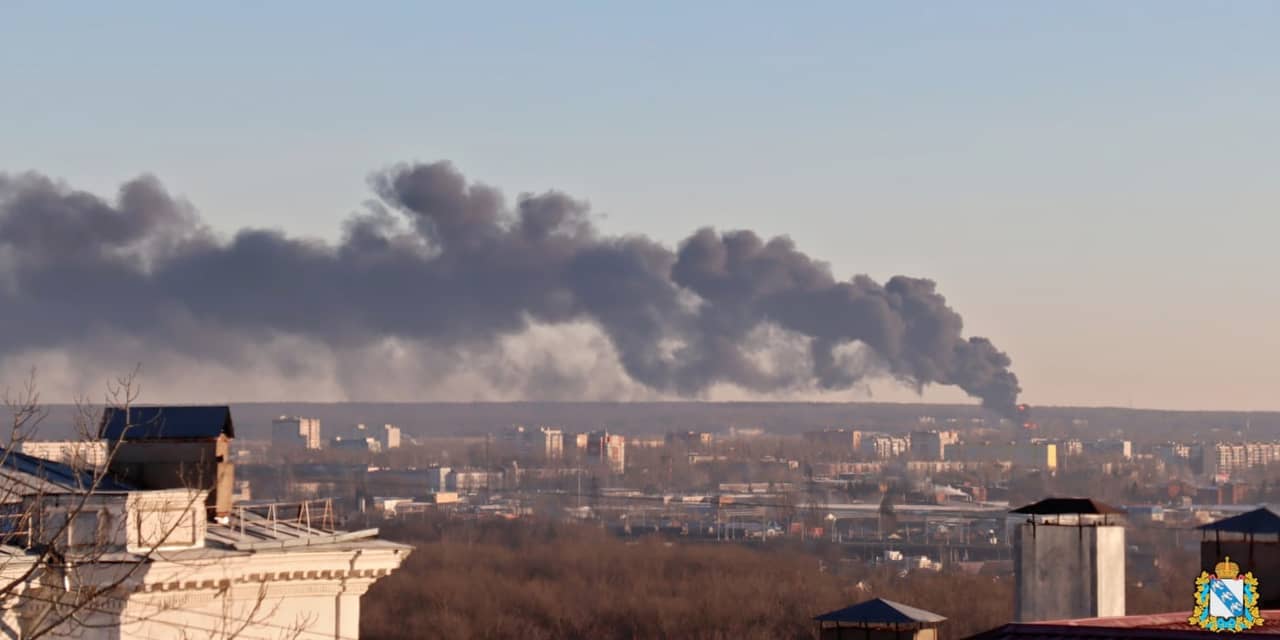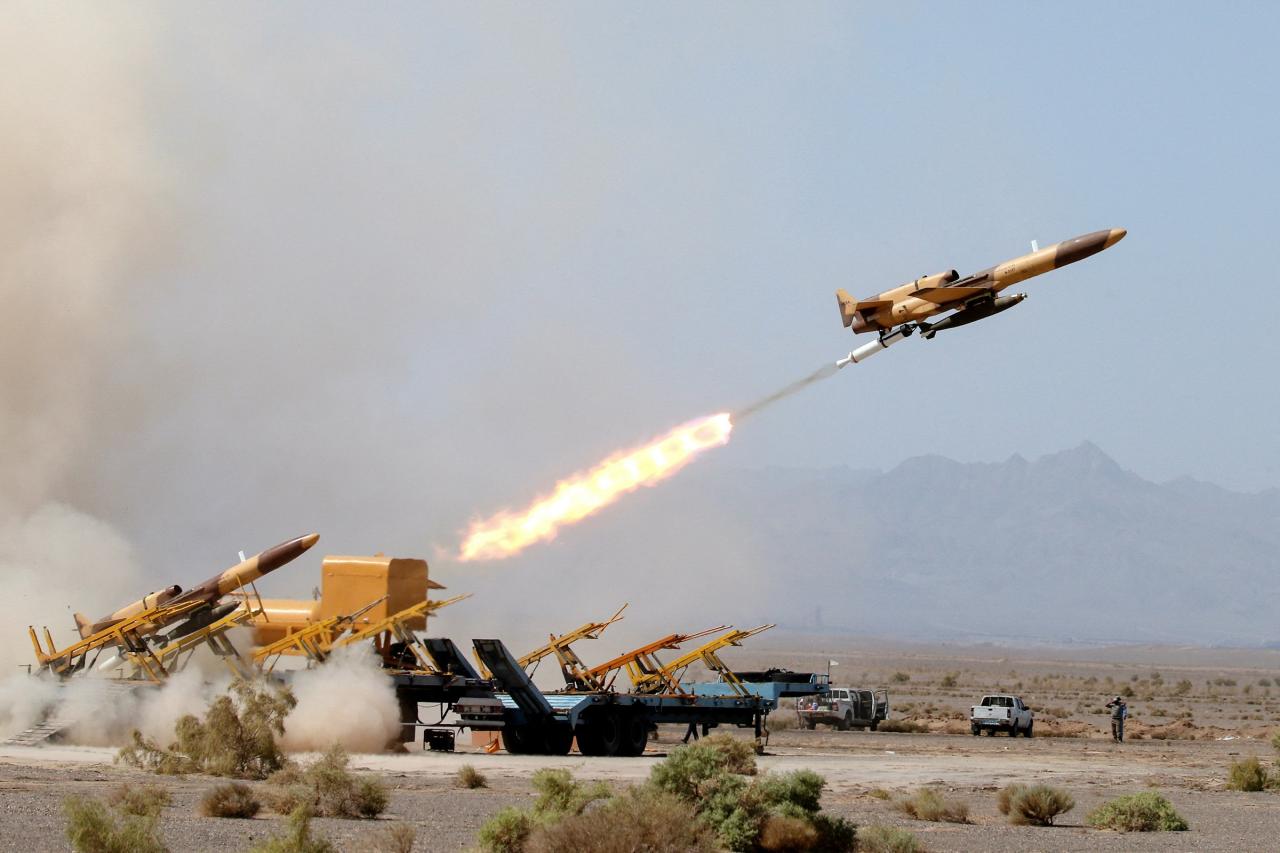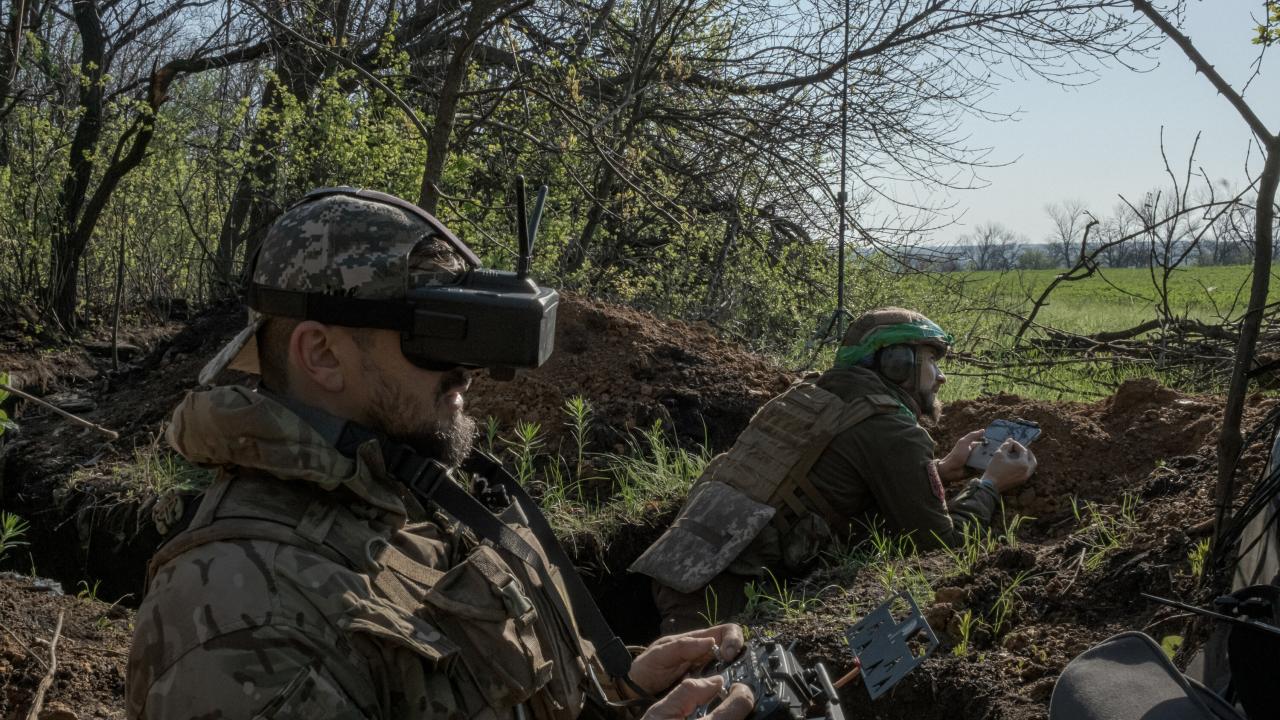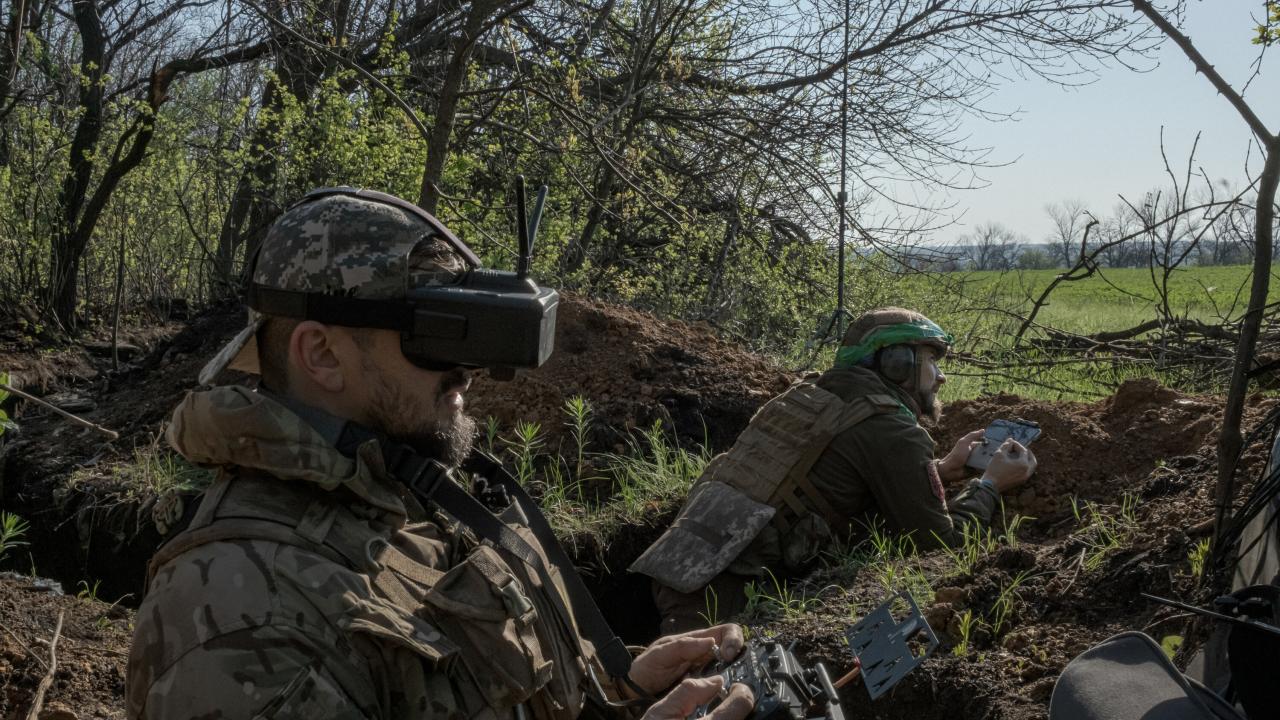Drone attack Russia: The escalating use of unmanned aerial vehicles (UAVs) against Russian targets has become a significant geopolitical development. This involves a complex interplay of technological advancements, geopolitical motivations, and evolving military strategies. We’ll explore the various types of drones employed, the locations targeted, the actors involved, and the broader consequences of this evolving conflict.
Recent drone attacks on Russia highlight the growing use of unmanned aerial vehicles in conflict. If you’re interested in operating drones legally and responsibly, you should check out the requirements for a drone pilot license canada before you even think about flying one. Understanding drone regulations is crucial, especially given the escalating tensions and potential for misuse seen in events like the Russian drone attacks.
From sophisticated, long-range drones capable of carrying substantial payloads to smaller, less expensive models used for reconnaissance and sabotage, the variety of UAVs used in attacks against Russia reflects a rapidly changing battlefield. The strategic importance of the targeted locations, ranging from military bases to infrastructure hubs, highlights the calculated nature of these attacks and their potential to disrupt Russia’s military operations and economic stability.
We will also examine Russia’s countermeasures and the international implications of this emerging form of warfare.
Drone Attacks Against Russia: A Technological and Geopolitical Analysis
The increasing frequency of drone attacks against Russia represents a significant shift in the geopolitical landscape. These attacks, varying in scale and sophistication, target critical infrastructure and military assets, raising concerns about regional stability and the potential for escalation. This analysis explores the various facets of these attacks, examining the types of drones used, the geographic locations targeted, the actors involved, the impact and consequences, Russia’s response, the technological advancements fueling these attacks, and their broader international implications.
Recent drone attacks on Russia are raising serious questions about escalating tensions. Trying to analyze the situation and find reliable information is tough, especially when tools like ChatGPT, which could help summarize news, are acting up – if you’re experiencing issues, check out this resource on chatgpt not working. Understanding the context of these attacks requires accurate and readily available information, highlighting the importance of dependable technology during such times.
Types of Drones Used in Attacks

Several types of drones are employed in attacks against Russia, ranging from commercially available models modified for military purposes to more sophisticated, purpose-built UAVs (Unmanned Aerial Vehicles). Their capabilities vary significantly based on design and modifications.
| Drone Type | Range (Approximate) | Payload Capacity (Approximate) | Targeting System |
|---|---|---|---|
| Modified Commercial Drones (e.g., DJI Mavic, etc.) | Up to 10 km (depending on modifications) | Small explosives, incendiary devices | GPS-assisted, possibly with manual override |
| Purpose-Built Military Drones | 50 km – 1000+ km (depending on model) | Larger explosives, precision-guided munitions | Advanced GPS/INS, possibly with AI-assisted targeting |
| Fixed-Wing UAVs | Hundreds of kilometers | Significant payload capacity | Advanced navigation systems, potentially incorporating satellite imagery |
The effectiveness of each drone type depends on the target, the level of defenses, and the specific operational conditions. Modified commercial drones are easier to obtain and deploy but have limited range and payload capacity, making them suitable for smaller-scale attacks. Purpose-built military drones, while more complex and expensive, offer superior range, payload, and targeting capabilities, enabling more significant attacks against higher-value targets.
Geographic Locations of Drone Attacks

Drone attacks against Russia have targeted a range of locations, demonstrating a calculated targeting strategy focused on key infrastructure and military assets. The strategic importance of each location varies significantly.
Significant locations targeted include several air bases in western Russia, key oil infrastructure facilities in southern Russia, and administrative buildings in various regions. Attacks on military airfields aim to degrade Russia’s military capabilities, potentially disrupting their operations in Ukraine. Attacks on oil infrastructure target Russia’s economic capabilities, while attacks on administrative buildings aim to demonstrate vulnerability and disrupt operations.
A textual map illustrating the frequency and location of drone attacks would show a higher concentration of attacks in western and southern Russia, reflecting the proximity to the conflict in Ukraine and the strategic importance of these regions. The map would depict a gradual decrease in attack frequency as one moves further east.
Actors Involved in Drone Attacks, Drone attack russia
Attribution in drone attacks is often complex and challenging. However, several groups or entities have been linked, either directly or indirectly, to attacks against Russia. These include Ukrainian military forces, Ukrainian affiliated paramilitary groups, and other actors with varying motives and capabilities.
- Ukrainian Military: Ukraine has publicly acknowledged the use of drones in its defense efforts, although it rarely directly claims responsibility for specific attacks within Russia.
- Ukrainian affiliated paramilitary groups: Some groups have claimed responsibility for specific attacks, though independent verification is often difficult.
- Other actors: The involvement of other actors, whether state or non-state, remains a possibility but requires further investigation.
Impact and Consequences of Drone Attacks
The consequences of drone attacks on Russia are multifaceted, impacting military capabilities, infrastructure, and the civilian population. The economic repercussions are also significant, impacting Russia’s energy sector and overall economic stability. These attacks have also forced Russia to re-evaluate its military strategy and defense capabilities, leading to investments in counter-drone technology and adjustments to its defense posture.
Russia’s Response to Drone Attacks
Russia has implemented various measures to counter drone attacks, including electronic warfare systems, upgraded air defenses, and improved intelligence gathering. The effectiveness of these measures varies, with some attacks successfully penetrating Russian defenses. A comparison with another nation facing similar threats, such as Israel, would reveal similarities in the use of electronic warfare and air defenses but differences in the scale and sophistication of these systems.
| Counter-Drone Measure | Russia | Israel (Example) |
|---|---|---|
| Electronic Warfare | Jamming systems, directed energy weapons | Sophisticated jamming and disruption technologies |
| Air Defenses | Surface-to-air missiles, anti-aircraft artillery | Integrated air defense systems with layered defenses |
| Intelligence Gathering | Radar systems, signal intelligence | Advanced intelligence gathering and analysis capabilities |
Technological Aspects of Drone Attacks
Recent advancements in drone technology, including improved navigation systems, increased payload capacity, and the integration of artificial intelligence, have enabled increasingly sophisticated and effective attacks. Miniaturization of components and the development of more resilient drone designs have also contributed to the effectiveness of these attacks.
A hypothetical drone attack might involve a swarm of small, commercially available drones modified with GPS jammers and equipped with explosives. These drones, launched from multiple locations, could overwhelm Russian defenses through sheer numbers and coordinated attacks.
International Implications

The drone attacks against Russia have significant international implications, raising concerns about regional stability and the potential for wider conflict. Different countries hold varying perspectives on these attacks, reflecting their geopolitical interests and relationships with Russia and Ukraine. These attacks highlight the evolving nature of warfare and the challenges of maintaining international security in an era of increasingly accessible and sophisticated drone technology.
Final Thoughts
Drone attacks against Russia represent a new chapter in modern warfare, blurring the lines between conventional and unconventional conflict. The evolving technological capabilities of drones, coupled with the complex geopolitical landscape, make this a dynamic and concerning situation. Understanding the actors, motivations, and consequences of these attacks is crucial for comprehending the shifting power dynamics and potential for escalation in the region and beyond.
Drone attacks in Russia are escalating, raising concerns about the technology involved. Many of the drones used are commercially available, and understanding their origins is crucial. Check out the DJI Canada website, dji canada , to see the types of drones readily accessible. This highlights the need for stricter export controls to prevent such technology from being misused in conflicts like the ongoing drone attacks in Russia.
The long-term impact on regional stability and international relations remains to be seen, but the use of drones as a tool of conflict is undoubtedly here to stay.
Commonly Asked Questions: Drone Attack Russia
What are the main types of drones used in attacks on Russia?
A range of drones are used, from commercially available models modified for military purposes to more sophisticated, purpose-built UAVs. The specifics often remain undisclosed for security reasons.
How does Russia’s response compare to other countries facing similar threats?
Russia’s response involves electronic warfare, air defenses, and other counter-drone technologies, but the effectiveness varies depending on the type of drone and attack. Comparisons with other nations often reveal different technological capabilities and strategic approaches.
What is the civilian impact of these drone attacks?
While the primary targets are military or strategic infrastructure, civilian casualties and disruptions to daily life are a significant concern and are regularly reported.
What role does AI play in these attacks?
AI plays an increasingly important role in drone navigation, target identification, and autonomous flight capabilities, although the exact level of AI integration varies across different drone systems.
